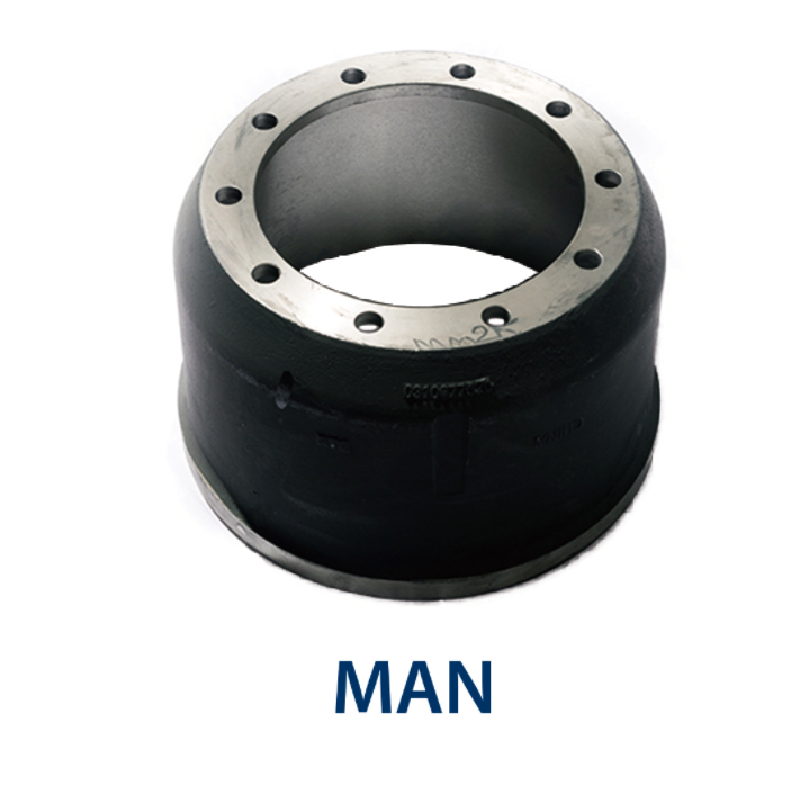Dec . 02, 2024 07:13 Back to list
Front Brake Drum Performance and Maintenance Tips for Safety and Longevity
Understanding the Front Brake Drum Essential for Vehicle Safety
When it comes to vehicle safety and performance, the braking system is one of the most critical components. Among the various parts of a braking system, the front brake drum plays a significant role, particularly in vehicles equipped with drum brakes. Understanding the function, benefits, and maintenance of front brake drums is vital for any car owner or enthusiast.
What is a Front Brake Drum?
A front brake drum is a component of a drum brake system. Unlike disc brakes, which use a flat disc and caliper to create friction, drum brakes consist of a cylindrical drum that rotates with the wheel. Inside the drum are brake shoes equipped with lining material. When the driver presses the brake pedal, hydraulic force pushes the brake shoes outward against the inner surface of the rotating drum, creating friction that slows down or stops the vehicle.
The Function of a Front Brake Drum
The front brake drum is primarily designed to convert kinetic energy into heat energy through friction. When the brake pedal is engaged, the shoes expand, pressing against the drum. This action not only slows the wheel's rotation but also transfers that force to the vehicle's suspension and ultimately to the ground. The efficiency of this process is crucial for effective braking, especially in emergency situations where quick stopping is necessary.
Advantages of Brake Drums
1. Cost-Effectiveness Drum brakes are often less expensive to manufacture and install than their disc counterparts. Consequently, vehicles equipped with drum brakes can be more affordable for consumers.
2. Durability Brake drums typically exhibit better durability under certain conditions. They can provide a consistent performance in various weather conditions, particularly in wet environments, where water can cause issues with disc brakes.
3. Self-energizing Nature When a drum brake is engaged, the design of the system allows the rotation of the drum to help pull the shoes into the drum, enhancing the braking force without requiring much additional effort from the driver.
4. Improved Weight Distribution The drum brake system can sometimes offer better weight distribution across the vehicle, which can enhance handling and stability during braking.
front brake drum

Disadvantages of Brake Drums
Despite their advantages, front brake drums also have drawbacks. They tend to have a longer stopping distance compared to disc brakes, especially in high-performance or heavy-load scenarios. Additionally, the cooling performance of drum brakes is generally inferior; they can overheat under extreme conditions, leading to brake fade—a significant reduction in braking power due to overheating.
Maintenance of Front Brake Drums
To ensure optimal performance, regular maintenance of front brake drums is crucial
1. Inspection Routine inspections should be conducted to check for signs of wear, such as grooves or scoring on the drum's surface. Any visible damage may necessitate resurfacing or replacement.
2. Cleaning Dirt and debris can accumulate inside the brake drum, compromising performance. Regular cleaning can help maintain the efficiency of the braking system.
3. Adjustment Some drum brake systems require periodic adjustments to ensure that the brake shoes make the proper contact with the drum. This is essential for maintaining optimal performance.
4. Replacement As with any brake component, the brake drum will eventually need to be replaced. Signs that replacement is necessary include severe wear, cracking, or overheating.
Conclusion
The front brake drum may not always receive the attention it deserves, but its importance in a vehicle's braking system is undeniable. While drum brakes have their advantages, understanding their limits is key to ensuring safe driving experiences. Routine maintenance, proper inspections, and timely replacements can help keep the braking system, including the front brake drum, in top condition, ultimately enhancing safety on the road. Car owners who understand these dynamics will be better equipped to maintain their vehicles effectively and ensure a safer driving experience for themselves and others on the road.
-
Scania Brake Drums: OEM Quality for Optimal Safety & Durability
NewsAug.16,2025
-
R.V.I: Advanced Remote Visual Inspection for Precision
NewsAug.15,2025
-
Discover HYUNDA: Innovative Vehicles, Equipment & Solutions
NewsAug.14,2025
-
R.V.I: Unlock Advanced Insights & Real-time Performance
NewsAug.13,2025
-
Kamaz Brake Drum: Durable & Reliable for Heavy Duty Trucks
NewsAug.12,2025
-
Heavy Duty Iveco Brake Drum - Premium Quality & Safety
NewsAug.11,2025
